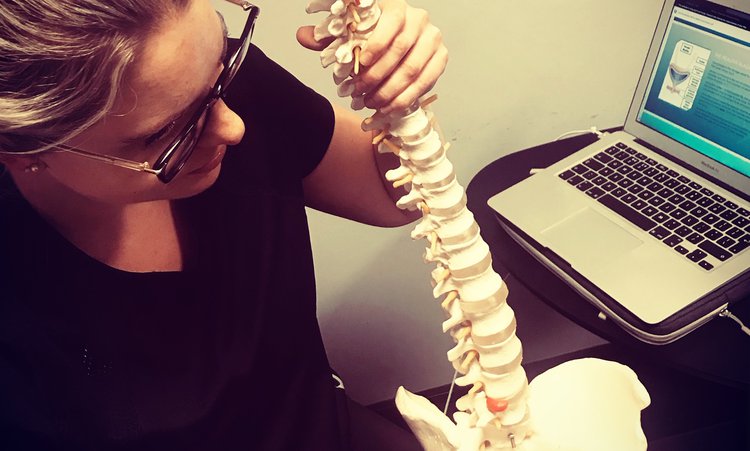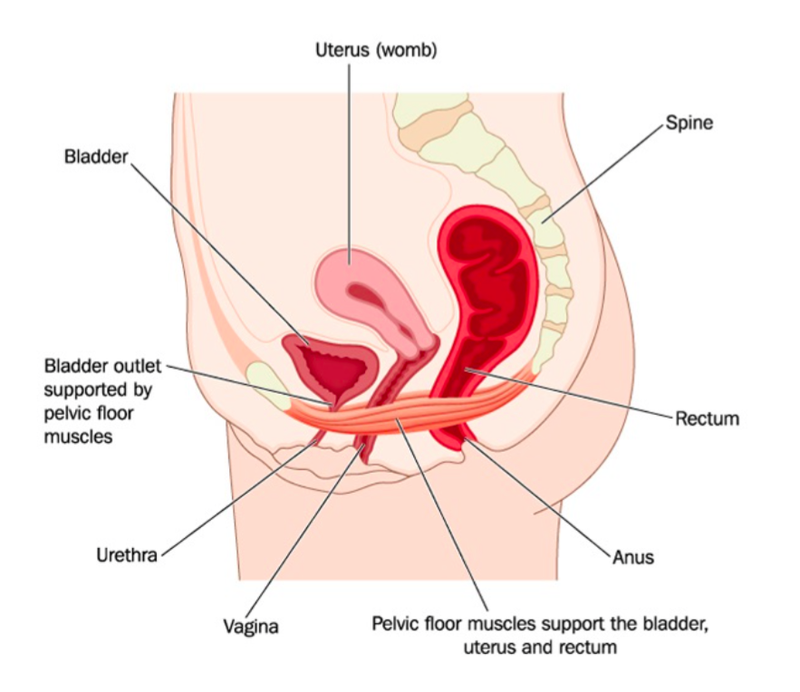What is Pelvic Health Physiotherapy? Sep 15 2019

Pelvic health physiotherapy covers a broad area of issues including continence problems, pelvic pain, post-natal return to exercise and post-operative gynaecological rehabilitation. Treatment centres around restoring the function of the pelvic floor which can often be weakened or damaged during childbirth, gynaecological surgery or other serious trauma. The pelvic floor naturally weakens with age (as do all of our muscles), often making symptoms more apparent over time. It is not uncommon for women who are going through the menopause to experience an increase in their existing symptoms or to experience pelvic floor dysfunction for the first time.
In order to fully understand how pelvic health physiotherapy can improve pelvic floor dysfunction and alleviate symptoms one must first understand the basic anatomy and purpose of the pelvic floor.
The pelvic floor is a bowl-shaped collection of muscles that covers the lower part of the
pelvis. It helps to stabilise the pelvis, control bladder and bowel function as well as keeping
the internal organs from moving downwards against gravity.

Pelvic floor weakness can cause leakage of urine and faeces, as the pelvic floor muscles are unable to maintain the closure of the urethra and rectum. When we cough, sneeze, laugh, run or lift something heavy there is an increase in intra-abdominal pressure, which means the pelvic floor must tighten and work harder to prevent leakage and to stop the internal organs from moving downwards. If the pelvic floor is weak it can fatigue easily and be less responsive to changes in intra-abdominal pressure. If it fails to tighten at the key moment then leakage occurs.
Part of pelvic floor rehabilitation is learning how to retrain the pelvic floor to be more responsive when it is really needed. This is known as ‘the knack’. The pelvic floor can also be strengthened to increase its endurance, so if you play sport or are active throughout the day the pelvic floor will be resistant to fatigue and you can exercise without the fear of leaking.
The pelvic floor works in conjunction with the abdominal muscles, diaphragm and gluteal muscles to maintain pelvic control when you move. If these muscles are weak, additional strain is placed on the pelvic floor, which can cause fatigue and contribute to symptoms. So if you are strengthening the pelvic floor, it’s equally important to strengthen the other muscle groups around the pelvis.
To learn more about how pelvic health physiotherapy could benefit you contact Executive Physiotherapy or book an appointment with Leanne our pelvic health physiotherapist.
Share this post: